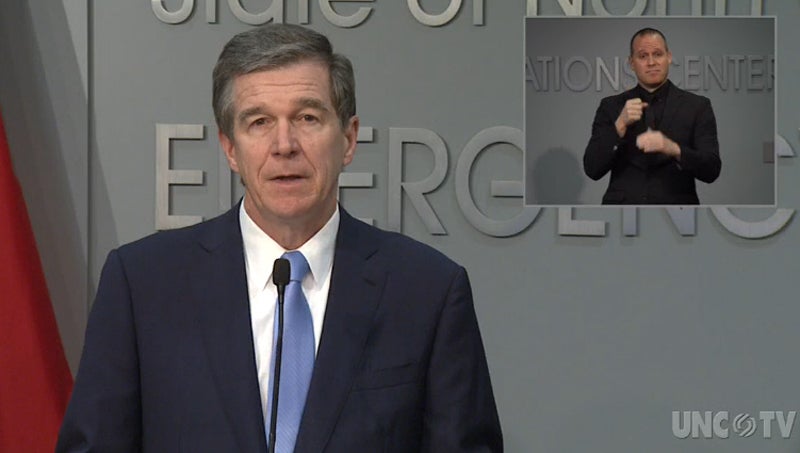Stay-at-home order extended, reopening planned in phases
Published 4:05 pm Thursday, April 23, 2020
|
Getting your Trinity Audio player ready...
|
North Carolina Gov. Roy Cooper has extended the stay-at-home order to May 8, saying the state is on the right path to reopening, but isn’t ready to lift restrictions yet. During a press conference Thursday, the governor also laid out a three-phase plan for reopening the state once certain benchmarks are met.
“It’s important to get our economy moving forward,” Cooper said. “We’re helping with unemployment payments, stimulus money and the businesses that continue to be open. But I won’t risk the health of our people or our hospitals. And easing these restrictions now would do that.”
During the briefing, N.C. Department of Health and Human Services Secretary Dr. Mandy Cohen discussed four areas where the state needs to see downward trends over the course of 14 days to enter a phased reopening. These included:
- Fewer COVID-like symptomatic cases;
- Fewer lab-confirmed cases of COVID-19;
- A downward trajectory of positive tests as a percentage of total tests;
- Fewer hospitalizations for COVID-19 cases.
Cohen says trends have been positive overall, including a downward trajectory of COVID-like symptomatic cases. She said the other trends are flattening, but not quite where they need to be yet. In addition to these trends, Cohen said the state is working toward the following goals:
- Tests completed per day, with a goal of 5,000 to 7,000 tests daily;
- Ability to conduct widespread tracing, including a workforce of 500 people to conduct said tracing;
- A 30-day supply of PPE for all healthcare providers.
Once those goals are met, Cooper said the state will enter a three-phase path to reopening. The governor added that the state will continually evaluate the timing of that plan based on the factors listed above. In Phase One the following would be in effect:
- The stay-at-home order remains in place, people can leave home for commercial activity;
- Those retailers and services will need to implement social distancing, cleaning and other protocols;
- Gatherings still limited to 10 people or fewer;
- Parks can open subject to gathering limits;
- Face coverings recommended in public;
- Restrictions remain in place for nursing homes and other congregate living settings;
- Encourage continued teleworking.
After at least two-to-three weeks in Phase One, Phase Two would gradually lift restrictions further, including:
- Lifting the stay-at-home order with strong encouragement for vulnerable populations to continue staying home;
- Allow limited opening of restaurants, bars and other businesses that can follow strict safety protocols with reduced capacity;
- Allow gatherings at houses of worship and entertainment venues with reduced capacity;
- Increase in number of people allowed at gatherings;
- Open public playgrounds;
- Continue rigorous restrictions on nursing homes and congregant care settings.
Finally, after four-to-six weeks in Phase Two, Phase Three would bring about far looser restrictions:
- Lessen restrictions for vulnerable populations with encouragement to continue practicing physical distancing;
- Allow increased capacity at restaurants, bars and other businesses, houses of worship and entertainment venues;
- Further increase the number of people allowed at gatherings;
- Continue rigorous restrictions on nursing homes and congregant care settings.
“If infections spike or our benchmark trends start to move in the wrong direction, we may move to move back to a previous phase to protect our public health,” Cooper said.
Cooper said an announcement on the reopening of public schools will come Friday.






